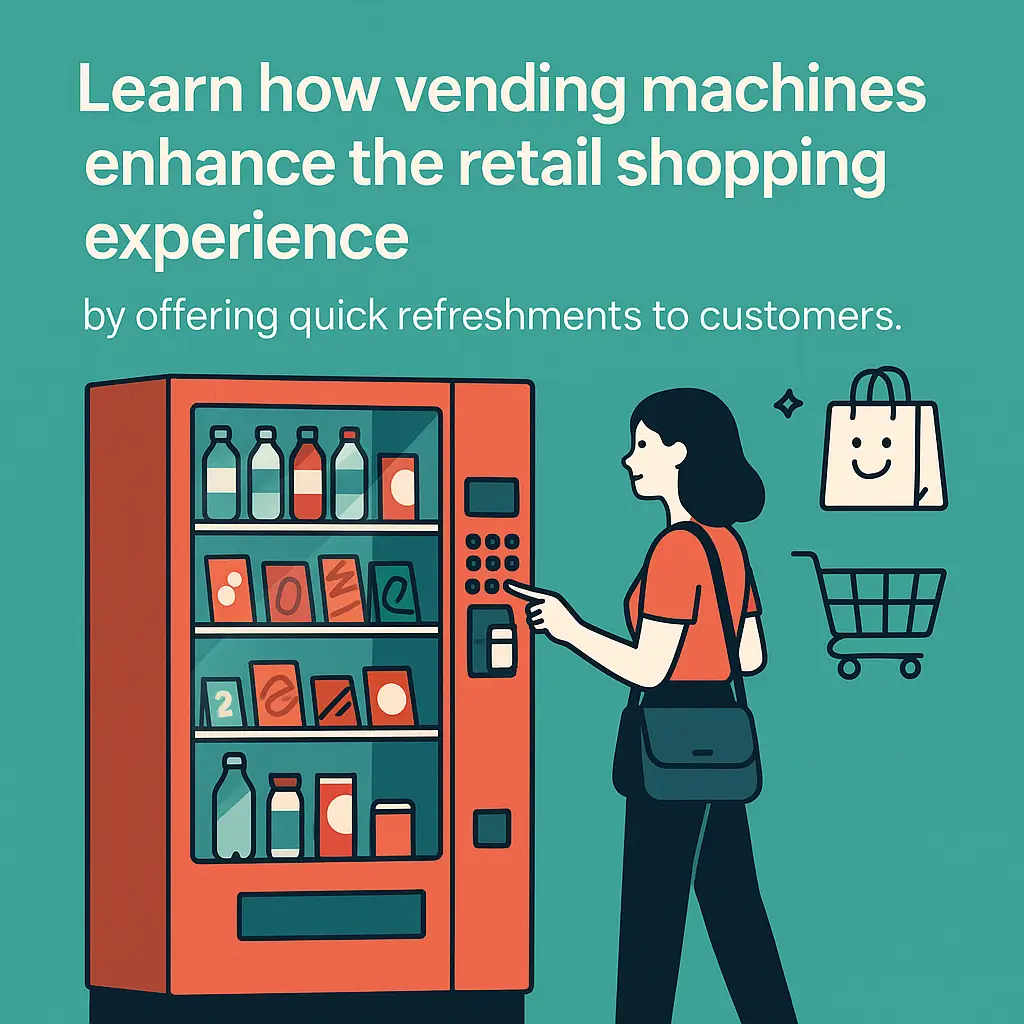Benefits of Vending in Retail Centers
Learn how vending machines enhance the retail shopping experience by offering quick refreshments to customers.
Back to Vending for Retail Locations ResourcesLearn how vending machines enhance the retail shopping experience by offering quick refreshments to customers.
Back to Vending for Retail Locations ResourcesVending stations deliver convenience and impulse fulfillment, providing shoppers with on-the-spot refreshments and everyday essentials that complement the store experience.
![]() Increase dwell time and encourage additional in-store purchases
Increase dwell time and encourage additional in-store purchases
![]() Offer curated, location-specific product mixes that match shopper needs
Offer curated, location-specific product mixes that match shopper needs
![]() Low-maintenance setup with modern cashless and telemetry features
Low-maintenance setup with modern cashless and telemetry features

Retail centers are built to serve shoppers quickly and efficiently. Adding vending stations in high-traffic corridors, food courts, or near entrances gives visitors immediate access to beverages, snacks, phone chargers, and other convenience items. These micro-retail touchpoints reduce friction and create additional revenue opportunities without requiring dedicated staff.
Vending captures shopper needs at the moment they arise — a tired parent, a thirsty browser, or a customer who forgot an essential item. By offering a thoughtfully chosen product mix, vending encourages small, high-margin purchases and can increase overall foot traffic for the center. For guidance on full-service operations and what to expect, see what is full-service vending.
Successful retail vending considers sightlines, peak traffic flows, and adjacent tenants. Machines near seating areas or cross-anchored with complementary stores perform best. For examples of placement strategies and merchandising, explore resources on retail-focused vending and mall deployments in the resources hub at Vending for Retail Locations.
Modern vending machines support contactless payment, loyalty integration, touchscreen menus, and telemetry for restocking alerts. These tools reduce stockouts and create opportunities for digital promotions. Learn more about payment options and technology trends in vending in our articles on payment systems and telemetry in the Vending Info section.
Retail centers can use vending to amplify marketing—seasonal displays, bundled promotions, and limited-time items are easy to rotate. Machines can be branded or wrapped to match center promotions and provide convenient fulfillment during special events. For inspiration, see how vending supports entertainment and event spaces in vending for entertainment venues.
Vending typically requires minimal infrastructure and no ongoing staff time; inventory, servicing, and maintenance are handled operationally to keep disruption to a minimum. Centers can gain the benefits of additional amenities with little administrative burden. For examples of how public and commercial spaces integrate vending, review our guides in the Public Buildings and Retail categories.
Ready to add vending to your retail center? Fill out the form on this page to get started — we’ll help you identify placement, product mix, and technology options that match your shoppers’ needs.
They add convenience, increase dwell time, and capture impulse purchases that complement existing retail offerings.
Corners near seating, food court perimeters, entrance vestibules, and cross-aisles by high-traffic anchors perform well.
Yes. A balanced product mix with clear labeling serves a wide customer base and supports wellness-focused initiatives.
Most machines are plug-and-play for power; internet for telemetry and cashless payments can be wireless or wired depending on capabilities.
Pricing and promotions can be updated remotely through machine software, enabling dynamic offers and time-based discounts.
Commercial vending units include reinforced cabinets, secure payment systems, and monitoring options to deter tampering and theft.
Yes. Machines can be wrapped, relabeled, or stocked with themed items to align with seasonal campaigns and center branding.
Most modern machines accept mobile wallets, tap-to-pay cards, and QR code payments for fast, hygienic transactions.
No. Inventory, servicing, and maintenance are typically managed operationally, minimizing demands on center staff.
Many installations can be completed within days to a few weeks depending on approvals and site readiness.